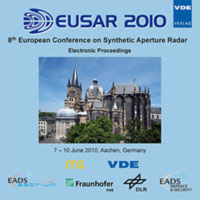Persistent scatterer pairs (PSP) approach in very high resolution SAR interferometry
Konferenz: EUSAR 2010 - 8th European Conference on Synthetic Aperture Radar
07.06.2010 - 10.06.2010 in Aachen, Germany
Tagungsband: EUSAR 2010
Seiten: 4Sprache: EnglischTyp: PDF
Persönliche VDE-Mitglieder erhalten auf diesen Artikel 10% Rabatt
Autoren:
Costantini, Mario; Falco, Salvatore; Malvarosa, Fabio; Minati, Federico; Trillo, Francesco; Vecchioli, Francesco (e-GEOS, Italy)
Inhalt:
Synthetic aperture radar (SAR) interferometry is a powerful technology for measuring slow terrain movements due to landslides, subsidence, and volcanic or seismic phenomena. The extraction of this information is a complex task, because the phase of the signal is measured only modulo 2p and is affected by random noise and systematic disturbances. We have recently developed a new approach, named persistent scatterer pairs (PSP), for the identification of persistent scatterers (PS) in series of full resolution SAR images, and the retrieval of the corresponding terrain height and displacement velocity. The proposed approach exploits only the relative properties of neighbouring points both for identification and analysis of PS. It is able to overcome the limits of classical persistent scatterer interferometry (PSI), being insensitive to spatially correlated artefacts (atmospheric and orbital artefacts), thus avoiding the need of model based interpolations or fits starting from a pre-selected set of points. The independency from the density of pre-selected points and the exploitation of redundant information makes this approach very robust. The results obtained by the PSP technique in a large set of SAR data show that the proposed approach is very effective, both for of the density and the accuracy of the measurements. The PSP approach can also provide valid tools for the identification and analysis of distributed scatterers, i.e. objects that are not characterized by strong point-like scattering properties, but nevertheless keep a good degree of coherence over time. In this work, after resuming the main ideas of the PSP method, we show some results obtained with high resolution COSMO-SkyMed images, and we briefly suggest a possible extension of the PSP method to the identification and analysis of distributed scatterers.


